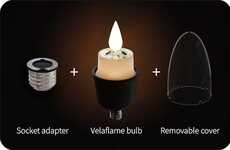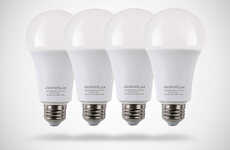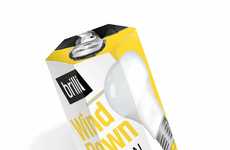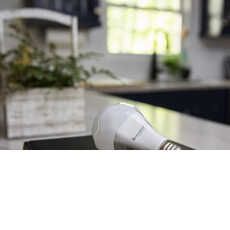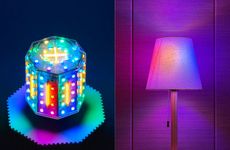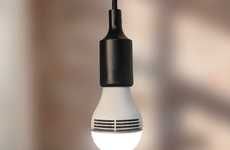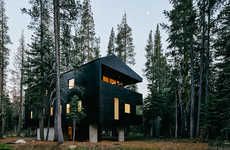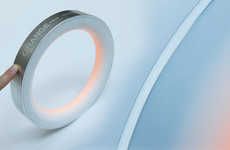
MIT Researchers Have Created Non-LED Energy-Efficient Light Bulbs
Cadhla Gray — January 17, 2016 — Eco
References: nature & fastcodesign
While more and more lighting designs are using LED lights to save electricity, researchers at MIT have discovered how to make energy-efficient light bulbs out of traditional incandescent bulbs.
Typical incandescent bulbs function by heating up an inner filament to over 5,000 degrees Fahrenheit, producing unnecessary and wasted heat energy, in addition to the desired light. Therefore, LED lights began replacing such bulbs, with the catch that the light they produce appears less natural.
However, MIT's reinvented energy-efficient light bulbs are made with photonic crystals that reflect the wasted heat back at the filament, reusing the heat energy to continue lighting the bulb -- all with less electricity. The final product is an incandescent bulb that has tripled in efficiency from its previous version, with the potential of increasing efficiency by another 40%.
Typical incandescent bulbs function by heating up an inner filament to over 5,000 degrees Fahrenheit, producing unnecessary and wasted heat energy, in addition to the desired light. Therefore, LED lights began replacing such bulbs, with the catch that the light they produce appears less natural.
However, MIT's reinvented energy-efficient light bulbs are made with photonic crystals that reflect the wasted heat back at the filament, reusing the heat energy to continue lighting the bulb -- all with less electricity. The final product is an incandescent bulb that has tripled in efficiency from its previous version, with the potential of increasing efficiency by another 40%.
Trend Themes
1. Energy-efficient Bulbs - The development of energy-efficient light bulbs using traditional incandescent technology presents an opportunity to improve lighting efficiency.
2. Reinvented Lighting Design - MIT's use of photonic crystals to reflect wasted heat back at the filament opens up possibilities for reinventing lighting designs and improving energy efficiency.
3. Natural-looking LED Lights - Continued research and development in LED lighting technology can focus on improving the natural appearance of light produced by LEDs.
Industry Implications
1. Lighting Manufacturing - The lighting manufacturing industry can explore the potential of incorporating photonic crystals in their products to enhance energy efficiency and performance.
2. Energy Conservation - The energy conservation industry can benefit from the development of energy-efficient light bulbs as a means to reduce electricity consumption.
3. Sustainable Technology - Companies in the sustainable technology industry can leverage MIT's research on reinvented incandescent bulbs to develop and promote eco-friendly lighting solutions.
5
Score
Popularity
Activity
Freshness



